0 Introduction
Renewable energy systems (RESs) such as solar panels and wind turbines have been connected to several power distribution systems as distributed energy resources (DERs)because they offer the following advantage:
- price reduction (grid parity) of RESs,
- power supply resiliency,and
- environmental affinity (carbon neutrality).
Therefore,the power distribution system must be reinforced to transmit so-called inverse direction power flow from the distribution line to the power system.For this purpose,the Japanese Ministry of Economy,Trade,and Industry (METI) aims to reinforce the power transmission and distribution systems to realize the 3E + S: “Energy security,” “Economy (economical energy supply),” and“Environmental conservation (environmental affinity and energy conservation)” while ensuring “Safety (energy supply safety and human and livestock safety)”.Although the reinforcing of the trunk power system has been initiated in Japan,the manner of reinforcement of the distribution systems is planned to be discussed after 2023.Worldwide,various types of next-generation power distribution systems have been proposed.In terms of resiliency,the microgrid is one of these new types of power distribution systems.A number of similar systems have been proposed,such as the “FRIENDS” and “Networked Microgrid,” which are discussed in this paper.
In Chapter 2,the carbon neutrality policies of several countries and the relevance of renewable energy resources to these policies are discussed.The necessity of resilient power supply is investigated in Chapter 3.The realization of the new type of power delivery systems that fulfil the “3E+S”criteria is illustrated in Chapter 4.Chapter 5 introduces cutting-edge products or topics realized through digitalized control.
1 Carbon Neutrality Policy and Renewable Power Supply
In August 2020,the Intergovernmental Panel on Climate Change (IPCC) published the 6th Assessment Report based on physical science facts[1].The report states the following:
“Compared to 1850–1900,the global surface temperature averaged over 2081–2100 is very likely to be higher by 1.0 to 1.8 °C under the very low greenhouse gas(GHG) emission scenario (SSP1-1.9),by 2.1 to 3.5 °C in the intermediate scenario (SSP2-4.5),and by 3.3 to 5.7 °C under the very high GHG emission scenario (SSP5-8.5).”
SSP1-1.9 represents the scenario of global carbon neutrality by 2050,SSP2-4.5 represents a scenario depending on the carbon emission policy of each country,and SSP5-8.5 represents the scenario considering the carbon emission so far.
The report predicts an increase in the frequency of extreme climate phenomena due to global warming,as shown in Table 1.
Table 1 Predicted increase in frequency of extreme climate
phenomena
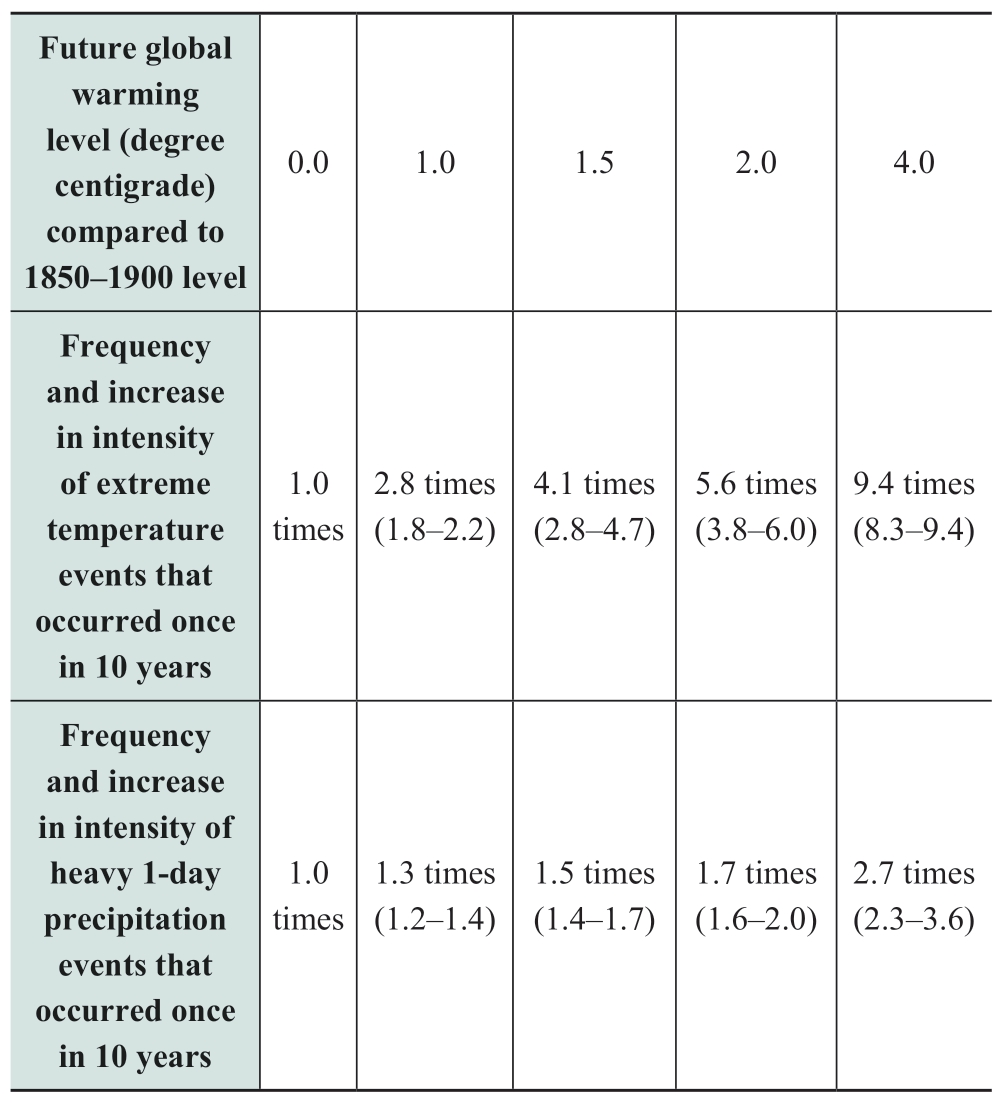
In response to the IPCC call,countries worldwide declared the aim of achieving carbon neutrality by 2050,as shown in Table 2.
Table 2 Path to carbon neutrality of major countries by 2050[2]
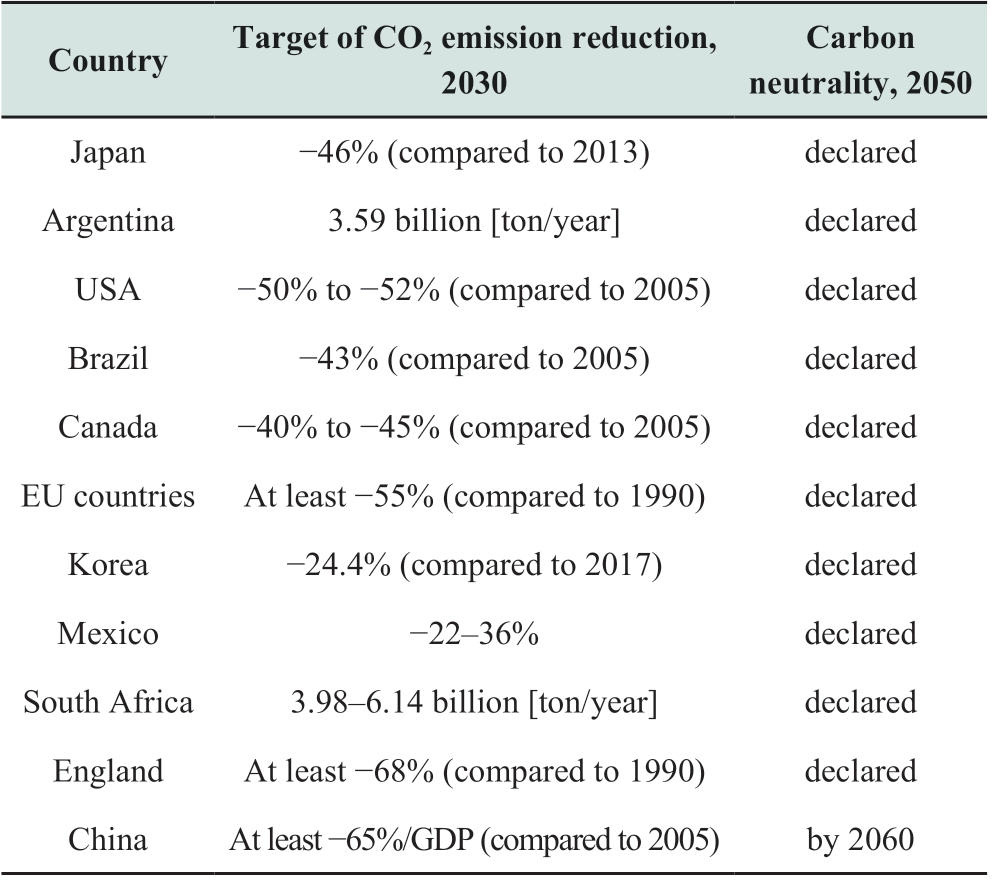
Renewable energy resources play an important role in the realization of the carbon neutrality.The current ratio of the RES generation compared to the total electric powerconsumption is shown in Fig.1.Each country aims to increase the ratio of RESs ambitiously by 2030 and 2050.Particularly,in Japan,METI plans to increase the RES ratio from 22% in 2020 to 36–38% (CO2 reduction of 46% from 2013) in 2030 and 50–60% (carbon neutrality) in 2050.In 2050,the remaining portion (40–50%) of electricity will be provided by nuclear,hydro,ammonia water,and coal systems with carbon capture and storage generators.

Fig.1 Ratio of renewable energy generation to total electric power consumption of each country[3]
As a very large amount of RESs will be connected to the future power grid,the problem of their integration must be addressed.For this,it is necessary to reinforce local grids and power distribution systems where a very large amount of RESs will be connected.Despite the high cost,the RESs can be successfully used to enhance the resiliency of the power supply through their autonomous independent operation even under the fault state (blackout) of the power system.
2 Necessity of Resilient Power Supply
As shown in Table 1,the IPCC report states that the frequency of extreme climate phenomena will increase manyfold as a result of the global surface temperature increase triggered by human activities.This can be seen in the extremely high temperatures,strong typhoons and hurricanes,and heavy precipitations experienced current.These phenomenal result in massive blackouts.Strong earthquakes can also cause large blackouts,as is common in Japan.For example,in March 2011,a large blackout occurred,covering the eastern part of the country for three months triggered by the Great East Japan Earthquake.The Kumamoto region experienced a five-day blackout(approximately 0.5 million houses) in April 2016.A total power outage (approximately 3 million houses) of the whole Hokkaido area occurred in September 2018 due to major generator outages triggered by a local direct earthquake[4].Small blackouts occur often due to typhoons and heavy precipitation.In September 2018,large blackouts affected Japan twice.Typhoon No.15 caused a blackout(approximately 1 million houses) in the Chiba region for several weeks.Then,Typhoon No.21 caused a blackout(2.4 million houses) in the Kansai region.These blackouts brought the resiliency of electric power supplies to attention in Japan.
The reinforcement of the power transmission and distribution system has been used to avoid blackouts and make the power system resilient.However,RESs have currently become dependable tools for power consumers as a countermeasure for these blackouts.RESs can be used as independent power generators to supply power to the load around them even during blackouts.Particularly,the RESintegrated microgrid is a reliable tool to mitigate blackouts.In the microgrid,the power generated by RESs is always consumed at the load around them without transmission and distribution losses.This realizes “local production for local consumption.” To tackle global warming and make the power supply resilient against large blackouts caused by disasters such as earthquakes,typhoons,and landslides,the METI,Japan,has proposed the concept of “local area microgrid” [5],as shown in Fig.2.
Fig.2 demonstrates the operating concept of the local area microgrid:
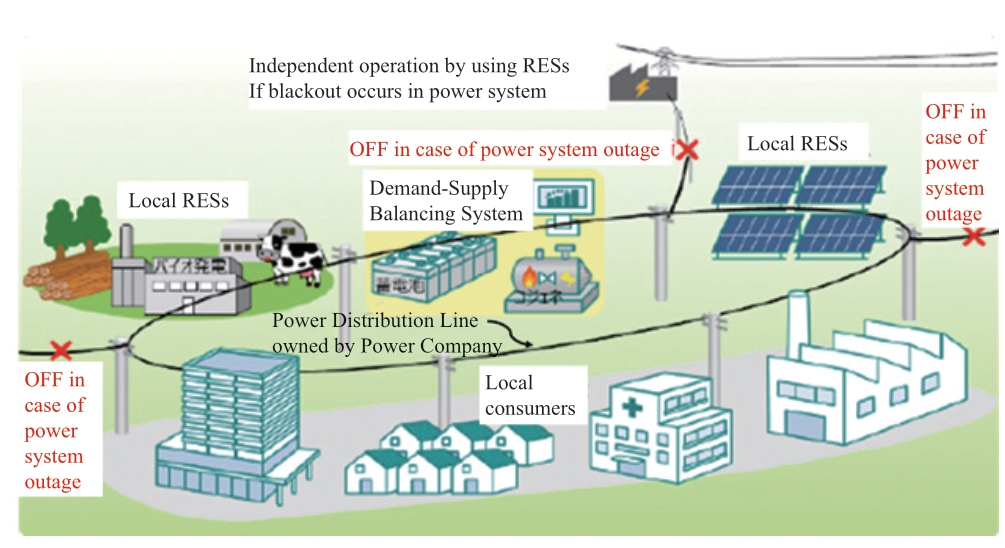
Fig.2 Local area microgrid proposed by METI,Japan(revised from the figure depicted by METI,Japan)
(1) The power distribution system with several privately owned DERs is operated by a power distribution company as an open loop radial distribution system in the normal state of the power system.
(2) In an emergency state or in case of power outage,a sound part of the power distribution lines is separated from the power distribution system by opening or closing sectionalizing switches,and the designated microgrid operator operates the separated sound distribution lines with the DERs as an independent microgrid to supply power in the area,particularly to the emergency load.
The “local area microgrid” is not a genuine microgrid as it operates only in emergency states.However,more than 25 masterplans of the local area microgrids have been designed through policy subsidies in Japan.Several systems are under construction and aimed to start operation in 2022.
3 Flexible Network of Microgrids
Similar to the “local area microgrid” in Japan,the concept of the fractal operation of networked microgrid [6]has been proposed in the USA.This concept also uses separate parts of the networked distribution feeders as microgrids just as the local area microgrid does when the distribution feeders are disconnected from the power system.As shown in Fig.3,during normal operation,all distribution feeders are connected to the power system from the area where the power is supplied (left-side shaded area).If several distribution feeders are disconnected (such as due to disasters),fractal service areas of parts of the distribution feeders are separated by opening the sectionalizing switches,and power is supplied to each fractal from the DERs installed in it.If available,several fractal areas are connected to each other to reinforce the supply reliability and enable peer-to-peer supply (right-side small shaded fractal area).
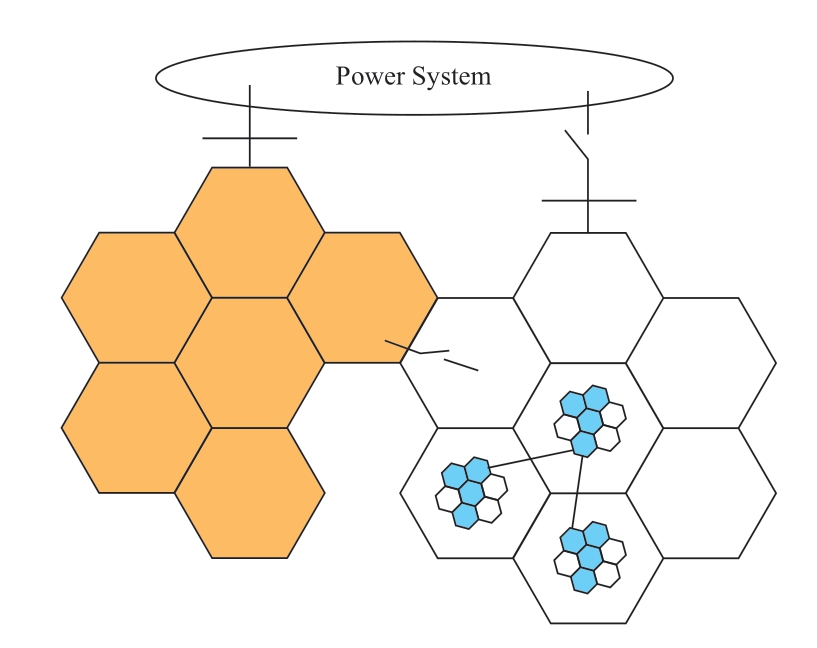
Fig.3 Fractal operation of networked microgrid
The separated microgrid of the fractal area does not exactly fit with the concept defined by the US Department of Energy because it is not connected to the power system at just one point.The NREL proposed another type of networked microgrid that does not have this discrepancy,as shown in Fig.4 [7].Though independent DER or independent load is not depicted,the system allows to connect them to the distribution feeders.
If each microgrid of the networked microgrids shown in Fig.4 has its own “energy center,” and the service areas of the connected microgrids form fractals,then the system is named FRIENDS (Flexible,Reliable,and Intelligent Energy Delivery System),which was proposed in Japan approximately two decades ago [8-9].
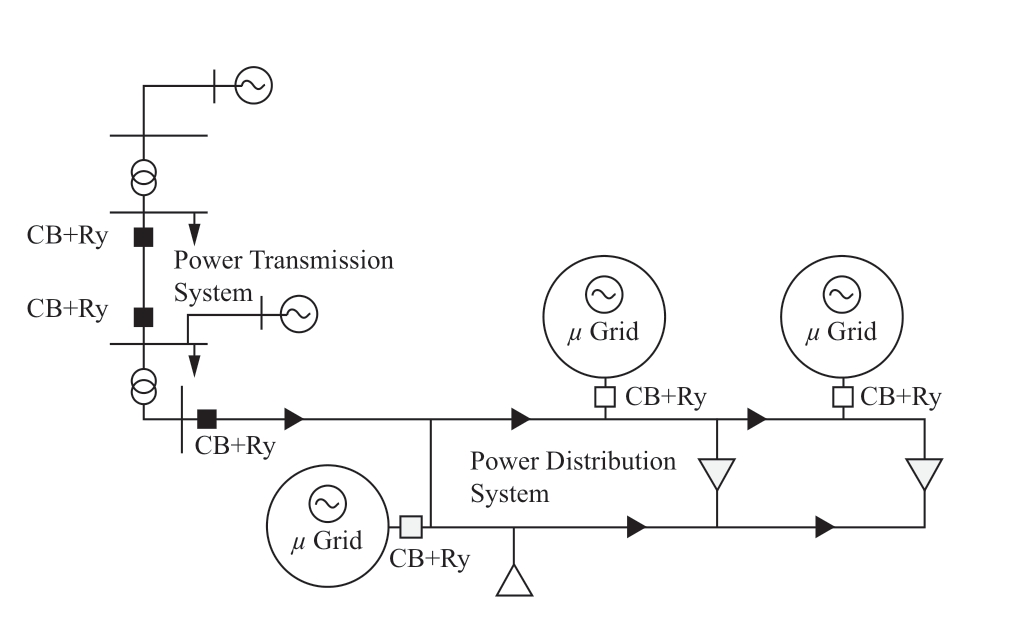
Fig.4 Networked microgrid
FRIENDS can achieve the following using distributed power generation resources,energy storage systems,demand response,power electronics technologies,highlevel communication technologies,distributed intelligent facilities,etc.:
(1) flexibility in reconfiguration of the network,
(2) reliability in power supply,
(3) multimenu or customized power quality services to allow consumers to select the quality of the electric power,
(4) load levelling and energy conservation,and
(5) efficient demand responses.
The general concept of FRIENDS is illustrated in Fig.5.With FRIENDS,the power system can be operated without interrupting the power supply by flexibly reconfiguring the distribution network (seamless transfer) even after a fault.Further,each consumer can select the quality of electrical power independently through its energy center,referred to as “power quality control center (QCC).” Multiple powerquality services,referred to as “customized power quality services,” can be provided for each consumer through QCCs.The concept of customized power quality services is illustrated in Fig.6.Consumers can select qualities of power independently according to their needs.In addition,as distributed generators (DGs) and distributed energy storage systems (DESSs) are allocated to the demand side,energy conservation and demand response (DR) are enabled.Notably,the detailed system design and apparatus of the QCCs depend on their purpose and location.
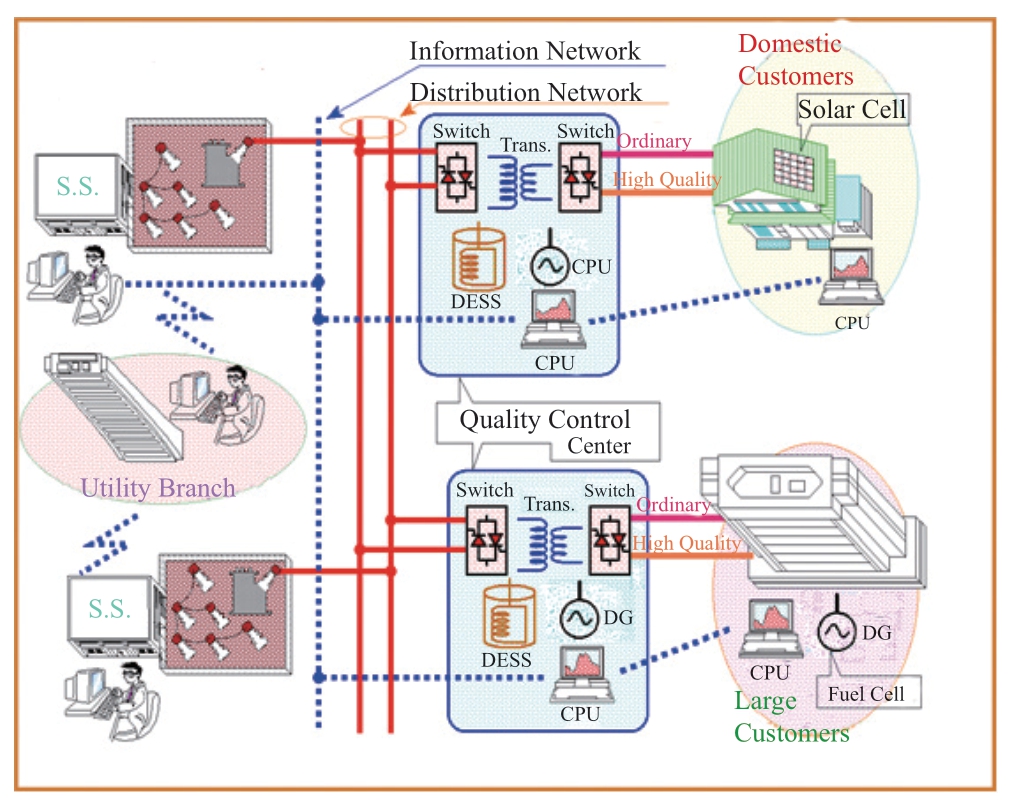
Fig.5 General concept of FRIENDS
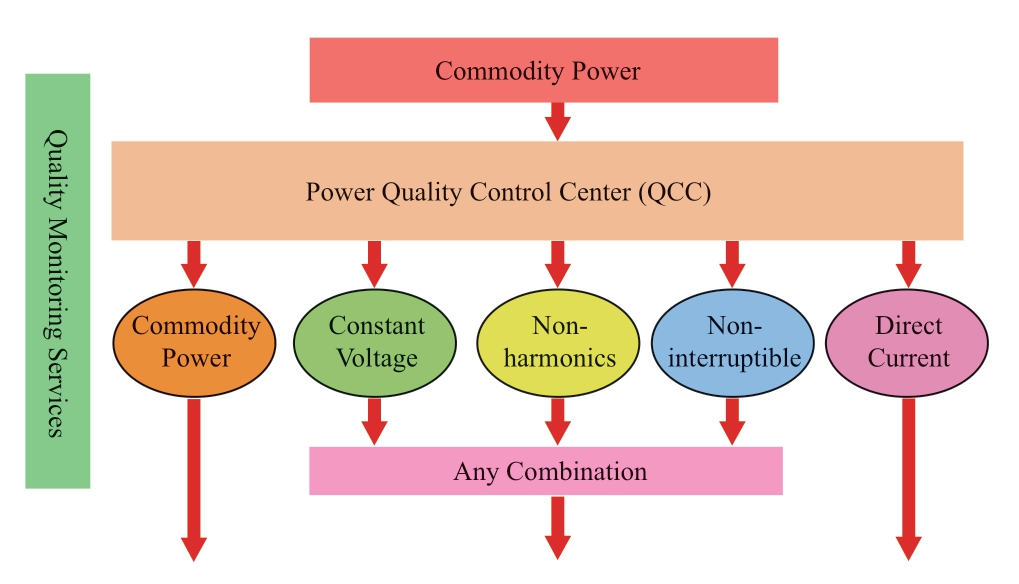
Fig.6 Concept of multiple power quality services
The information technology (IT) (smart communications and control) can play an important role in the efficient operation of FRIENDS.In FRIENDS,QCCs can be supplied with electrical power from several substations through several power lines to enforce supply reliability.A typical fractal QCC allocation in urban areas and an example of power distribution network configuration of FRIENDS are shown in Fig.7.
As shown in Fig.7,in FRIENDS,QCCs connect to each other through distribution feeders as a meshed network to attain supply reliability.In the QCC,electric power with various levels of quality is generated for multimenu services or customized power quality services,and numerous static open and closed switches can provide a flexibility in connections to high- and low-voltage lines.Distributed power generation resources and energy storage systems are expected to be introduced in the QCC for high supply reliability and energy conservation.
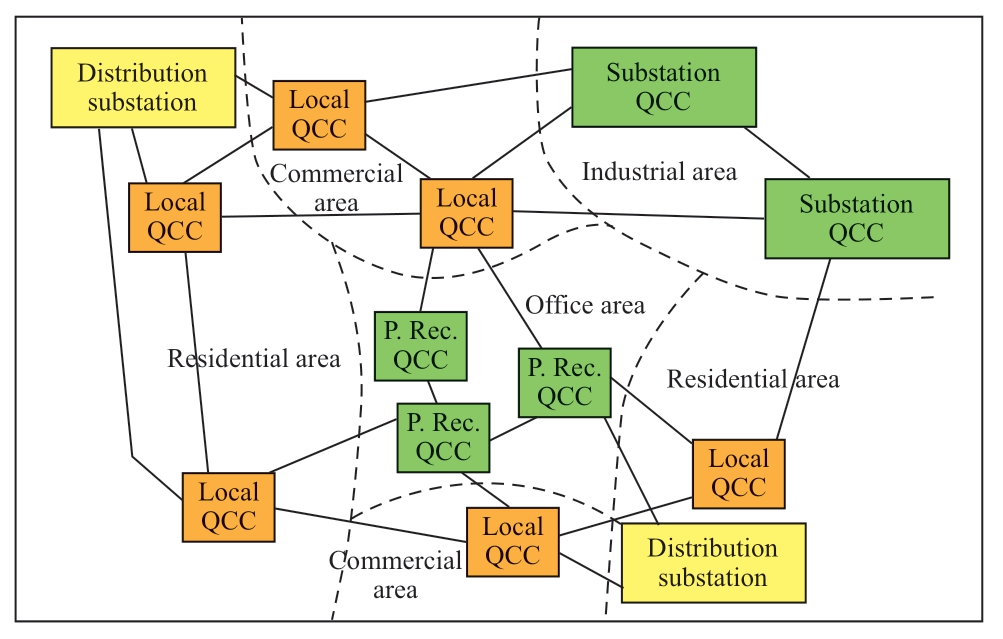
Fig.7 QCC network configuration in urban area
4 Digitalized Control of Microgrids
Control functions of the energy management system(EMS) are important for the efficient operation of the microgrid.Before discussing the microgrid’s operation and control,the “Aggregator” [10]or virtual power plant(VPP),needs to be introduced.The aggregator aggregates the power generated by small-scale solar power plants,wind farms,private power generators,combined cycle generation systems,etc.,and the DR of the heat pumps and other types of loads.By aggregating the electric power,the aggregator behaves as an owner of a large power plant.The business model of the aggregator is the same as that of the VPP.The roles of the aggregator are to supply adjustment power to maintain power quality,supply power to adjust the demand–supply in-balance,level the fluctuations of the electric power generated from the renewable energy resources,and supply necessary power to customers while reducing the total generation cost.
In Japan,as shown in Fig.8,the METI defines two types of aggregators: “Resource aggregator” and “Aggregation coordinator.” The resource aggregator aggregates the power from the small-scale generators and DR resources according to the orders of the aggregation coordinators.The aggregation coordinator aggregates the power from the resource aggregators and supplies power to the power system according to the sales contract or orders from the power transmission company (TSO).The resource aggregator or aggregation coordinator sometimes operates the microgrid to aggregate the power.The EMS plays an important role in aggregating power efficiently in the aggregation systems and microgrids.
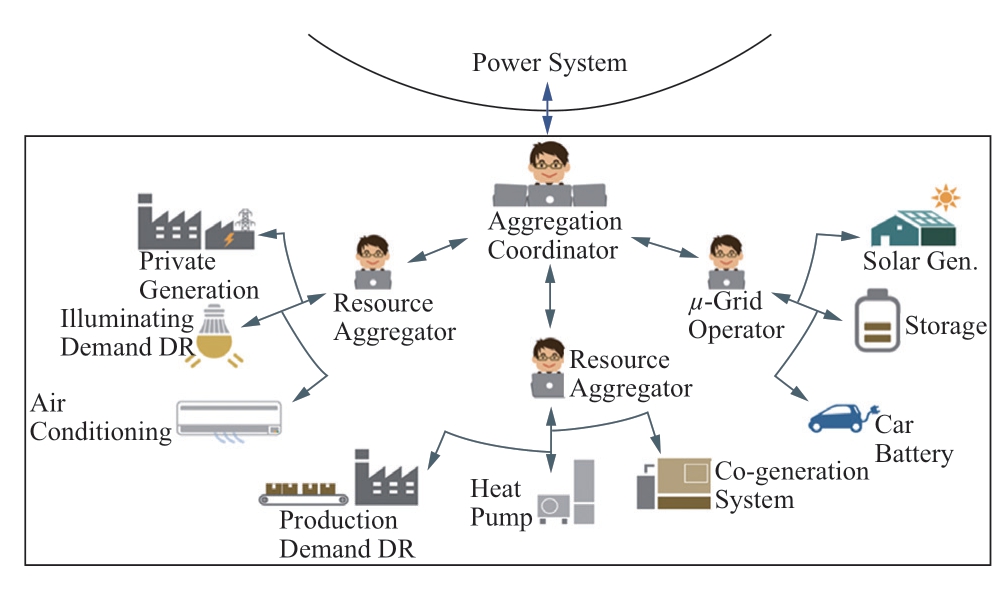
Fig.8 Aggregation coordinator and resource aggregator(revised from the figure in “Energy Resource Aggregation Business Handbook” by METI,Japan)
The EMS has the following five fundamental functions:
(1) supervision,
(2) system control,
(3) data logging,
(4) forecasting,and
(5) planning (energy conservation).
The detailed functions of EMSs differ according to their locations.Generally,the power system is controlled hierarchically through EMSs installed at important sites or locations in the system,as shown in Fig.9.They are,from the top of the hierarchy,the distribution management system(DMS),community (C) EMS,factory (F) EMS,building(B) EMS,and home (H) EMS.Moreover,the aggregation coordinators,resource aggregators,VPPs,and microgrid operators have their own EMSs.Large-scale solar power stations,wind farms,storage controlling stations,etc.,also sometimes have their own EMSs.Each EMS has specific functions in relation to its hierarchical roles according to its installation position.
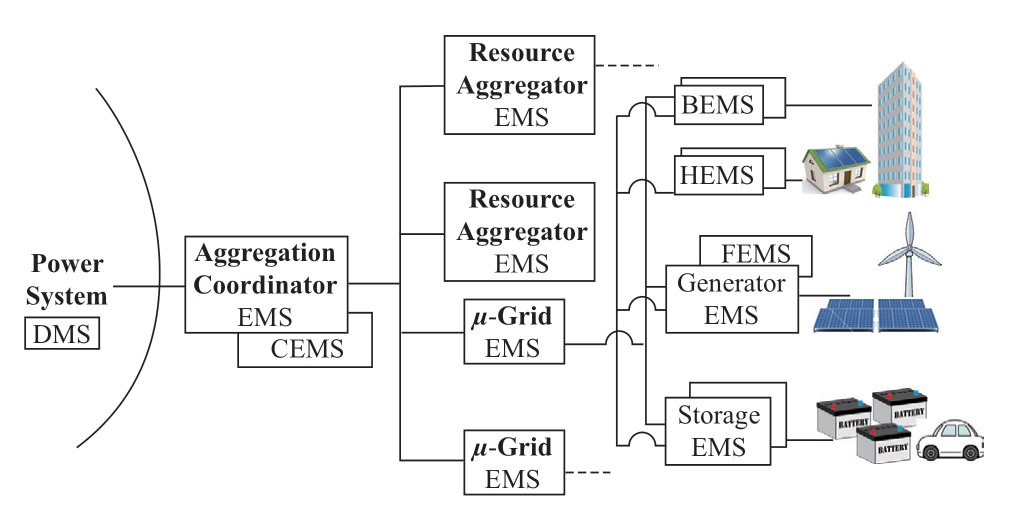
Fig.9 EMS hierarchy in the power distribution system
Thus,the EMS (except DMS) provides the functions listed in Table 2.Business-related functions are not included in Table 2; only the technical purpose functions are shown.
Table 2 Essential functions of the EMS
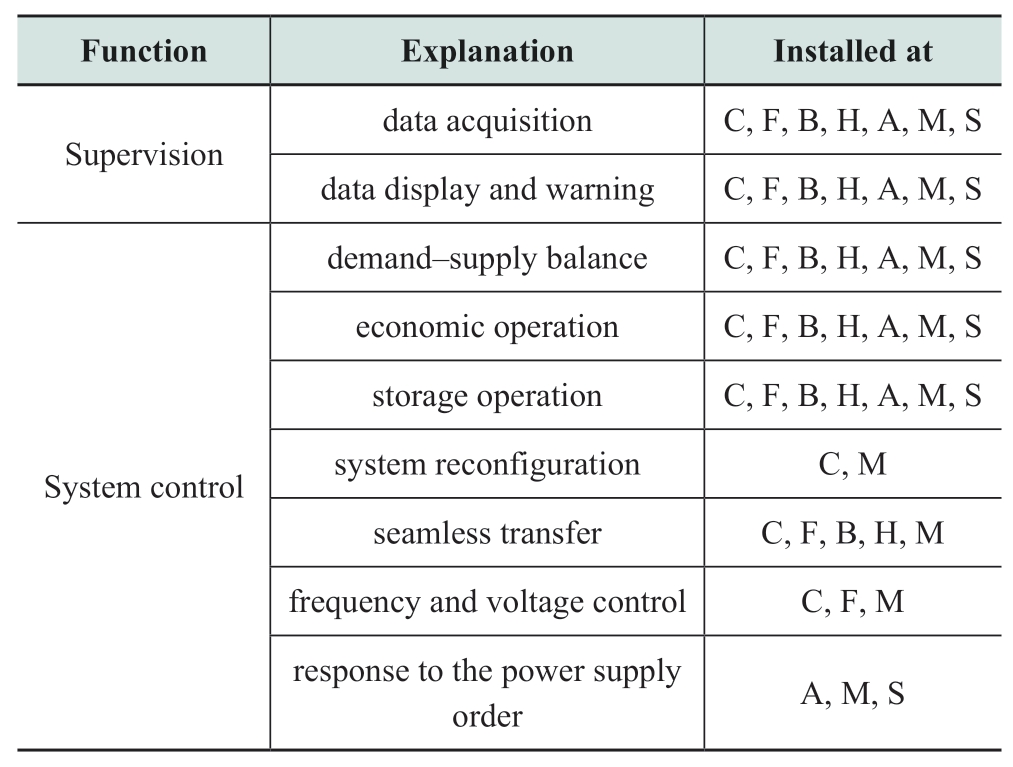
continue

C: CEMS,F: FEMS,B: BEMS,H: HEMS,A: Aggregator’s EMS,M:Microgrid’s EMS,S: Storage station’s EMS
Table 2 explains the five functions in detail and mentions possible installation sites.For example,the data acquisition(logging) and alarm warning functions are installed in the EMSs allocated in all positions or locations shown in Fig.9.The major functions of the microgrid are the planning and control of demand–supply balance.The demand and available renewable energy of the area are forecasted,and the most economical demand–supply schedule is calculated periodically.According to the calculated schedule,the demand–supply control is executed through minor on-line corrections.If necessary,charging and discharging control of the batteries may also be executed.Another important function of the microgrid is the independent operation of the system when a blackout occurs in the power system.So-called seamless transfer or system reconfiguration functions are prepared for such a situation.However,to realize seamless transfer,the main power generator of the microgrid must be a constant voltage type (grid forming type),and the microgrid needs to be connected to the power system with a synchronism-check operation switch.
As the functions of the EMS are almost the same,if the roles of the installed site are the same,the computer programs controlling these functions can be stored in a cloud database and executed according to the requirements of the installed positions of the EMSs.The cloud database is convenient because it can accumulate all necessary data of the system.The data can then be used in any function without needing to collect them from other computers through communication lines.Therefore,the cloud database is becoming an essential tool for the EMS.
5 Conclusion
Large-scale disasters,triggered by meteorological changes due to global warming,often cause blackouts worldwide.This has brought to attention the power supply resiliency and renewable energy resources.Therefore,the power supply system must integrate numerous renewable energy resources and must be resilient.To realize this,a promising technology is the microgrid or networked microgrid with an energy center.The so-called FRIENDS and some other examples of the networked microgrid were introduced in this paper.These systems can integrate numerous renewable generation systems and can be designed to be resilient.Moreover,digitalized control makes these systems efficient and convenient.Next-generation technologies such as the networked microgrid,grid forming inverter,and novel digitalized protection can make the power supply system more resilient and environmentally friendly.
Declaration of Competing Interest
We declare that we have no conflict of interest.
References
[1]IPCC WG I Report(2021)Climate Change 2021: the Physical Science Basis,https://www.ipcc.ch/assessment-report/ar6/.Accessed 18 April 2022
[2]Ministry of Foreign Affairs of Japan(2022): https://www.mofa.go.jp/mofaj/ic/ch/page1w_000121.html.Accessed 18 April 2022
[3]Renewable Energy Institute(2021)Stochastics Report,https://www.renewable-ei.org/statistics/international/.Accessed 18 April 2022
[4]OCCTO(2018)Final Report on the Major Blackout caused by the 2018 Hokkaido Eastern Iburi Earthquake,https://www.occto.or.jp/iinkai/hokkaido_kensho/files/Final_report_hokkaido_blackout_summarized.pdf.Accessed 15 April 2022
[5]METI Japan(2021)Local Area Microgrid Handbook (in Japanese).https://www.meti.go.jp/shingikai/energy_environment/energy_resource/pdf/015_s01_00.pdf.Accessed 15 April 2022
[6]K.P.Schneider et al.(2020)Networked Microgrid Operation,IEEE Electrification Magazine,70-79
[7]Flores-Espino F,Giraldez Miner J,Pratt A(2020) Networked Microgrid Optimal Design and Operations Tool: Regulatory and Business Environment Study.Office of Scientific and Technical Information (OSTI)
[8]Nara K,Hasegawa J (1997) A new flexible,reliable,and intelligent electrical energy delivery system.Electrical Engineering in Japan,121(1): 26-34
[9]Nara K,Hasegawa J,Oyama T et al (2000) FRIENDS:forwarding to future power delivery system.Ninth International Conference on Harmonics and Quality of Power.Proceedings(Cat.No.00EX441).Orlando,FL,USA.IEEE,8-18
[10]METI Japan(2021)Energy Resource Aggregation Business Handbook (in Japanese).https://www.enecho.meti.go.jp/category/saving_and_new/advanced_systems/vpp_dr/files/erab_handbook.pdf.Accessed 18 April 2022
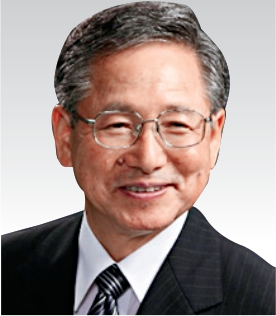
Received: 3 November 2021/Accepted: 15 April 2022/Published: 25 June 2022
Koichi Nara narakoichi@yahoo.co.jp
2096-5117/© 2022 Global Energy Interconnection Development and Cooperation Organization.Production and hosting by Elsevier B.V.on behalf of KeAi Communications Co.,Ltd.This is an open access article under the CC BY-NC-ND license (http://creativecommons.org/licenses/by-nc-nd/4.0/).
Biographies
Koichi Nara received B.E.,M.E.and D.E.degrees from Hokkaido University Japan,in 1968,1970 and 1986 respectively.After his industrial and academic experiences at Mitsubishi Electric Co.,Kitami Institute of Technology,Hiroshima University,Ibaraki University and National Institute of Technology Fukushima College,Japan,he is currently a director of the Systems Evaluation & Research Lab.,Japan.His research area is the optimization of operation and planning of power systems and power distribution systems.He is a Life Fellow of the IEEE and of the IEE of Japan.
(Editor Dawei Wang)
